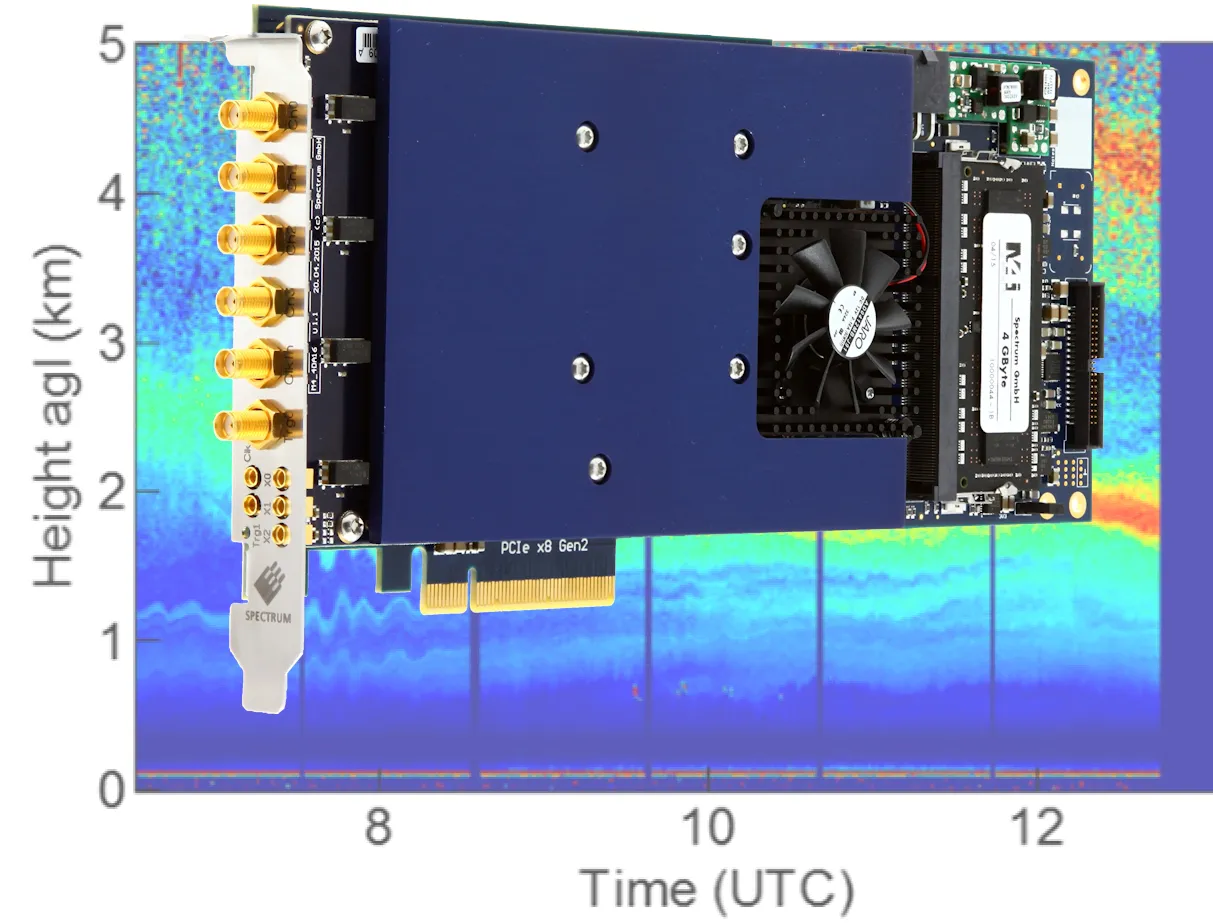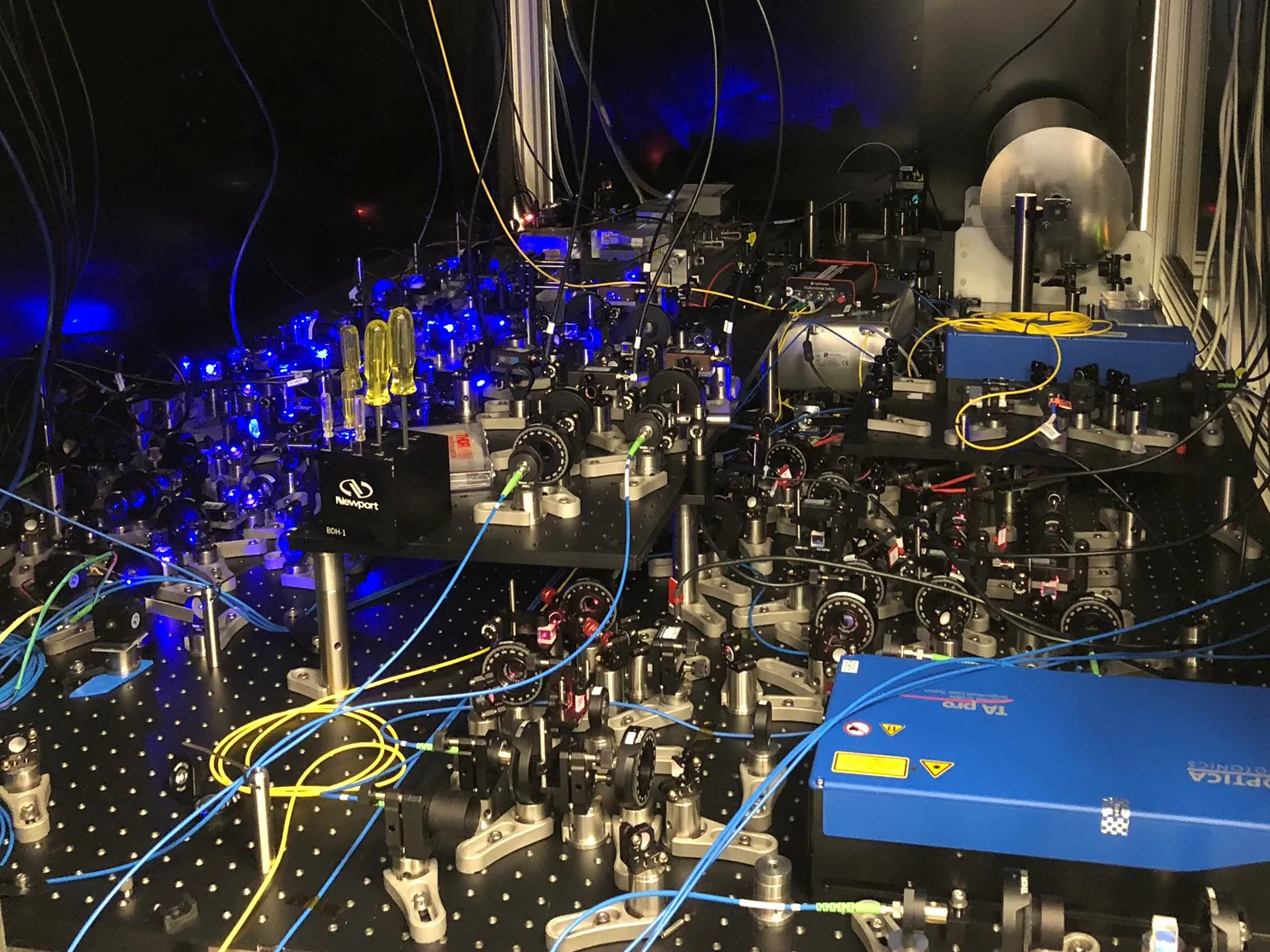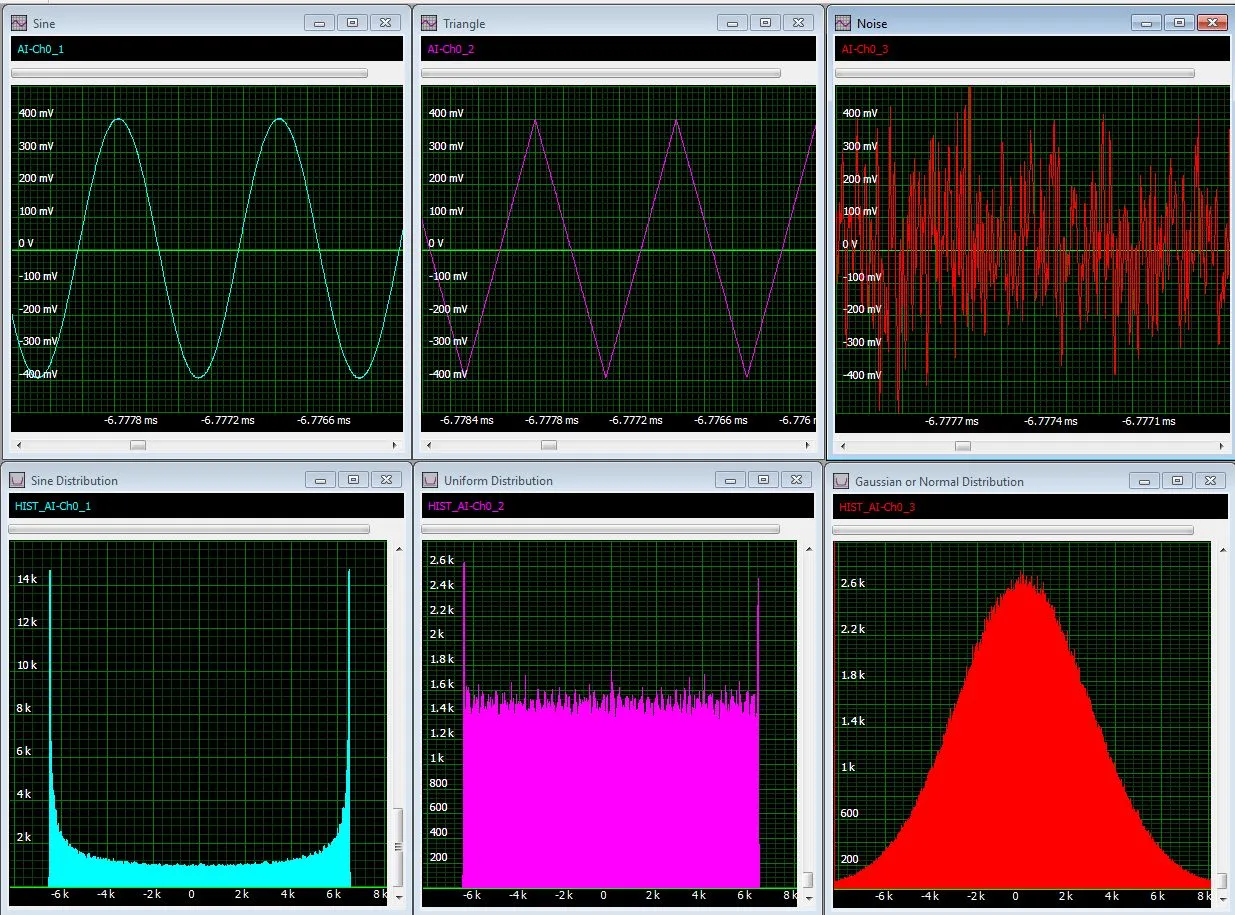Laser Applications
The unique characteristic of laser light is that it is highly coherent. High spatial coherence means that laser beams can be focused into small spots and collimated beams can travel vast distances with minimal dispersion. Lasers can also produce light that is high in temporal coherence. This means the emitted light has a narrow spectrum or is of a single color. Temporal coherence also makes it possible to produce pulses that are narrow, with the fastest lasers being able to produce pulses that go down into the femtosecond range. The unique quality of laser light has resulted in lasers now being used in an increasing number of applications. This includes fields as diverse as science, medicine, communications, chemistry, printing, data storage, imaging, welding, robotics, surveying, mapping, guidance and cutting.
To convert laser light into an electrical signal a sensor or detector is typically needed. Depending on the application, these sensors can be photo-diodes, photo-multipliers, detectors using scintillation techniques and CCD's, or some other other photo-voltaic device. For situations that require fast and accurate capture of the electrical signals Spectrum has a range of digitizers that can be employed. For example, 8 bit digitizers are available that offer up to 5 GS/s sampling rates and 1.5 GHz bandwidth. These products are ideal for making timing measurements, or capturing and analyzing pulses, that go down into the nano-second and sub-nanosecond region. When large dynamic range and maximum sensitivity is required high-resolution 14 and 16 bit digitizers are available for the capture and analysis of signals that go as high as 250 MHz in frequency. These high-resolution products deliver outstanding signal-to-noise ratio's (up to 72 dB) and spurious free dynamic range (of up to 90 dB) so that small signal variations can be detected and analyzed.
The digitizers are also equipped with ultra-fast trigger circuits, complete with trigger time stamping, so that the dead-time between acquisitions can be extremely small (down to as little as 16 ns). Together with large on-board memories (up to 4 Gsamples/card) and advanced streaming and readout modes this makes the digitizers ideal for applications where long and complex signals need to be captured and analyzed. Data can be stored in the on-board memory or streamed in FIFO mode over the fast PCIe bus of the digitizer to a PC. By streaming data to a RAID based storage array it's even possible to seamlessly store hours of information. To help with data analysis and data reduction Spectrum's M4i series of digitizers also feature on-board FPGA based processing functions that can be perform on-the-fly Averaging and Peak detection routines.
Each digitizer card can have from one to four channels and up to eight cards can be linked together with Spectrum's StarHub system to create instruments with up to 32 fully synchronous channels, making them perfect for applications where multiple sensors and large sensor arrays are deployed.
Typical laser applications include laser ranging, 3D modeling, LIDAR and LADAR, LDA/PDA, time interval measurements for printers and optical components, data storage, laser absorption spectroscopy, medical imaging (including optical coherence tomography), mass spectroscopy, interferometry, guidance systems, fiber optic communications, optical backscatter reflectometry and distributed temperature and strain measurement.
Spectrum Product Features
- >5 GS/s Sampling Rates with high Bandwidth
- 12, 14 and 16 Bit Resolution
- Fast Trigger and Read-Out rates
- On-board Block Statistics (Peak Detect)
- On-Board Block Average
Matching Card Families
Related Documents

LIDAR - Light Detection and Ranging
The development of laser technology over 50 years ago led to the creation of light detection and ranging (LIDAR) systems that delivered a breakthrough in the way distances are calculated. The principles of LIDAR are much the same as those used by radar.

Case Study: AWG-card by Spectrum used to move around single atoms
How do you determine what is going on when you can't actually see the components in the system you are investigating? This is the challenge when investigating the quantum behavior of electrons in a lattice of ions. The solution being created by the Physics Department at the University of San Diego, California is to build a model that is slightly larger with observable components of atoms moving in an optical lattice.

Signal Processing for Digitizers
Modular digitizers allow accurate, high resolution data acquisition that can be quickly transferred to a host computer. Signal processing functions, applied in the digitizer or in the host computer, permit the enhancement of the acquired data or the extraction of extremely useful information from a simple measurement.
Research Papers
FMCW Lidar
At the State Key Laboratory of Precision Measurement Technology and Instruments, Tianjin University, China, they are using an M2p.5961-x4 125 MS/s, 16 bit Digitizer to simultaneously measure velocity and distance using a Frequency Modulated Continuous Wave (FMCW) lidar system. The system details and experimental results are discussed here:
Results and System DetailsBreath Gas Analysis
See how a Spectrum M2i.4963-exp digitizer card, programmed under LabVIEW, is used at the Department of Applied Physics and Electronics, Umeå University, Umeå Sweden, in an EC‑QCL (external cavity – quantum cascade laser) system for real‑time breath gas analysis of CO and CO2 by clicking the link here:
Reserach PaperFSI: Frequency Scanning Interferometer
The Institute of Optics and Electronics, Chinese Academy of Sciences, in China is using a 250 MS/s, 16 bit M4i.4421-x8 Digitizer to help eliminate the influence of laser frequency nonlinearities in a frequency-scanning interferometry (FSI). A white paper discusses the process for absolute distance measurement using an FSI that’s based on Hilbert phase subdivision
White PaperMulti-Heterodyne Interferometry
By using multi-heterodyne interferometry with a high resolution M4i.4471-x8 digitizer the State Key Laboratory of Precision Measurement Technology and Instruments, Tianjin University, Tianjin, China, has developed a method for making absolute distance measurements. Experimental results demonstrate an agreement within 750 nm over 80 m distances and an update rate of 167 μs. To see the full white paper click here:
Research PaperBrillouin Optical Time-domain Reflectometer
At the Changsha University of Science & Technology in China they have used a Spectrum M4i.2210-x8, 1.25 GS/s, Digitizer to acquire high speed pulses in a Brillouin Optical Time-domain Reflectometer (BOTDR) using Discrete Fourier Transforms (DFT). A paper discussing experimental results that show improved spatial resolution and accurate location of distributed sensing is available here:
Research PaperAnalysis of Diode Laser Modulation Wavelengths
The State Key Laboratory of Laser Interaction with Matter, Northwest Institute of Nuclear Technology, China, is using a 1.25 GS/s M4i.2212-x8 Digitizer together with a customized long fiber ring etalon to make measurements and analysis of diode laser modulation wavelengths at high accuracy and response rates. An article discussing their process can be found here:
Research PaperOptical Resolution Photoacoustic Microscopy
The School of Biomedical Engineering, Tohoku University, Japan is using a 5 GS/s M4i.2230-x8 Digitizer to achieve optical resolution photoacoustic microscopy with sub-micron lateral resolution for visualization of cells and their structures. Details and results of their experimental setup can be found here:
Research PaperOptical Homodyne Tomography (OHT)
Researchers are developing techniques of non-stationary optical homodyne tomography (OHT) that allows the investigation of the hidden dynamics of light fields. At the Technical University of Dortmund they are using an M4i.2234-x8 5 GS/s digitizer to acquire signals from a balanced detector as part of their non-stationary OHT system which is discussed here:
Research PaperOptical Light Fields Photon Correlations
At the Technical University of Dortmund, Germany, physicists have developed a technique to determine photon correlations of optical light fields in real time. The system uses a high speed Spectrum M4i.2234-x8 digitizer to acquire signals from a balanced homodyne detector. The full details including the experimental setup and results can be found here:
Research PaperLaser-scanning Confocal Fluorescence Microscopy
Laser-scanning confocal fluorescence microscopy is a relatively new and important tool for biomedical research. At the University of Tokyo they are able to demonstrate confocal fluorescence microscopy at a record high frame rate of 16,000 frames/s thanks to new research and the use of a Spectrum M4i.2212-x8 high-speed digitizer. Click below to read the full story.
Research PaperDimensional Metrology
At the Institute of Geodesy and Photogrammetry, ETH Zürich, Switzerland, a fast Spectrum M4i.2234-x8 digitizer is being used in experiments aimed at solving problems in dimensional metrology. The digitizer is used with ultrashort pulse lasers and spectral manipulation to offer benefits in applications such as long distance measurement and 3D laser scanning. A white paper outlining the experimental approach and results can be found here
Research PaperHigh-Resolution Dual Comb Spectroscopy
At the University of Lyon, France, they have developed a bidirectional DC spectrometer (BD-DCS) that allows for the observation of the line-resolved molecular absorption spectrum in a broad spectral range. Signals from an Si-photodetector in the system are acquired using an M4i.4450-x8 500 MS/s, 14-bit Digitizer. A paper describing the BD-DCS and the high-resolution measurements made can be found here:
Research PaperCharacterizing the Aerosol Atmosphere
The Departament de F´ısica, Universitat Aut'onoma de Barcelona in Spain, have studied the aerosol atmosphere above the Observatorio del Roque de los Muchachos, by analysing data from an absolutely calibrated elastic LIDAR. Since 2017, the system has used an M4i.4450-x8 500 MS/s, 14-bit, Digitizer for signal acquisition. A paper discussing the results can be found here:
Research PaperMixing-Ratio Measurements of N20
The New Jersey Institute of Technology, in the US, has been using a quantum cascade laser open path system to study N2O path-averaged mixing ratios by detecting the light backscattered from common topographic targets. The system uses an M4i.4420-x8 250 MS/s, 16-bit Digitizer for signal acquisition and a paper, discussing the detection limits and accuracy, can be found here:
Research PaperLaser Control for OCT (Optical Coherence Tomography)
The Technische University, at Eindhoven in the Netherlands, has developed a control strategy, that includes the use of an AWG (model M2p.6566-x4 125 MS/s, 16-bit) as the signal source, for a monolithically integrated widely tuneable laser system on InP for optical coherence tomography. A white paper discussing the development is available here:
Reserahc PaperDynamic Hologram Generation for Atom Array Adressing
A thesis paper, presented to the Department of Physics and the Department of Computer Science at Harvard University, in the US, shows how an acousto-optic modulator array can be used to address a spatial light modulator from different angles. Two M2p.6568-x4 125 MS/s, 16-bit, AWG's act as a fast signal source to independently drive 16 acousto-optic modulators. The thesis which discusses the experimental setup, results and potential applications can be found here:
Research PaperLight Shaping through moving Acoust-Optic Holograms
A holographic acousto-optic light modulation (HALM) system, that is based on displaying holograms on acousto-optic deflectors, has been developed at the Optical Trapping Lab – Grup de Biofotònica, Departament de Física Aplicada, Facultat de Física, Universitat de Barcelona, in Spain. The system has potential application in future laser projectors and displays, structured illumination microscopy, laser material processing and optical trapping. To generate the acousto-optic deflector driving signals they are using an M4i.6631-x8 1.25 GS/s, 16-bit AWG. A paper discussing the system can be found here:
Research Paper